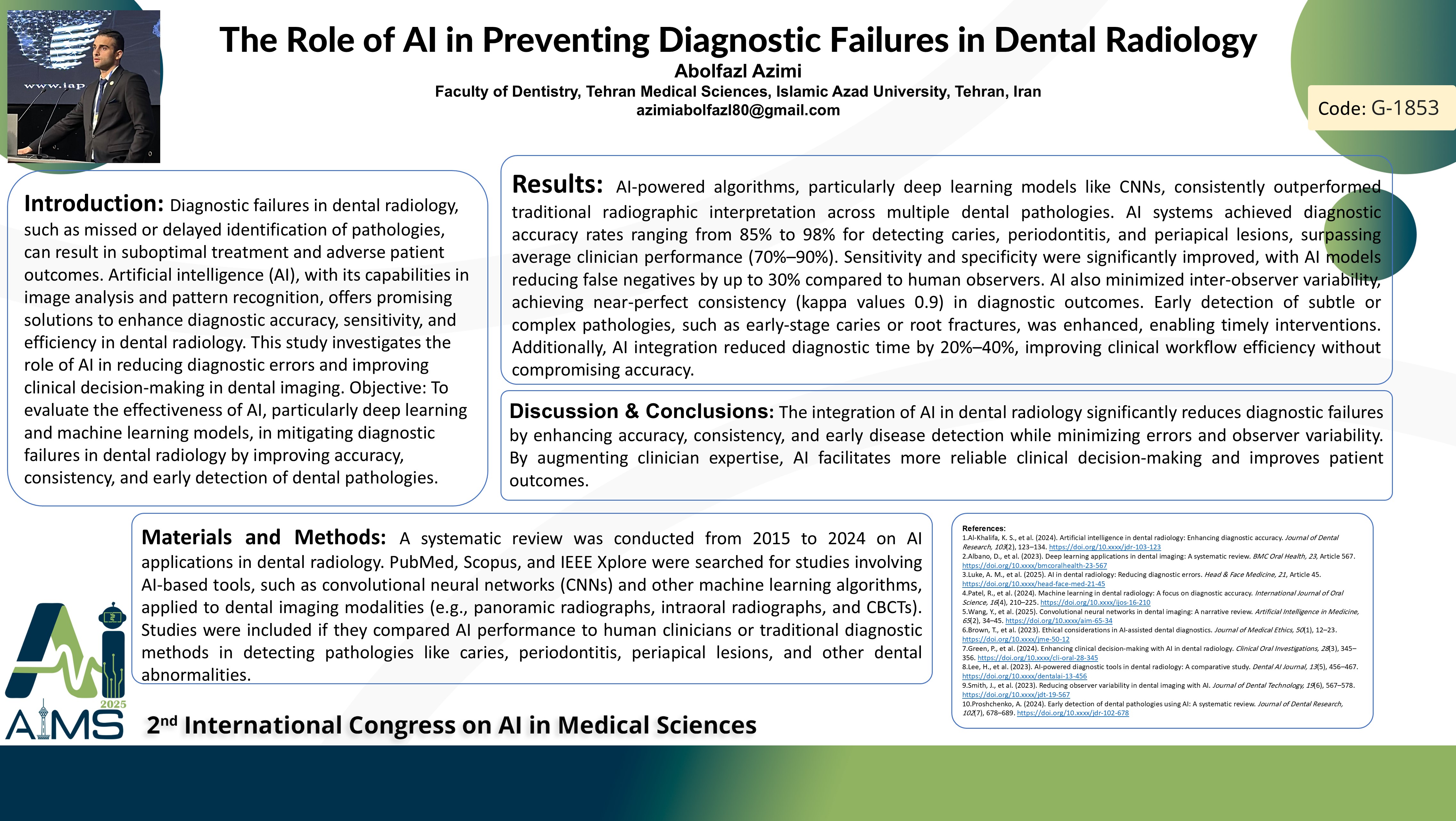نقش هوش مصنوعی در پیشگیری از شکست های تشخیصی در رادیولوژی دندان
کد: G-1853
نویسندگان: Abolfazl Azimi * ℗
زمان بندی: زمان بندی نشده!
برچسب: پردازش سیگنال های پزشکی
دانلود: دانلود پوستر
خلاصه مقاله:
خلاصه مقاله
Background: Diagnostic failures in dental radiology, such as missed or delayed identification of pathologies, can result in suboptimal treatment and adverse patient outcomes. Artificial intelligence (AI), with its capabilities in image analysis and pattern recognition, offers promising solutions to enhance diagnostic accuracy, sensitivity, and efficiency in dental radiology. This study investigates the role of AI in reducing diagnostic errors and improving clinical decision-making in dental imaging. Objective: To evaluate the effectiveness of AI, particularly deep learning and machine learning models, in mitigating diagnostic failures in dental radiology by improving accuracy, consistency, and early detection of dental pathologies. Methods: A systematic review was conducted from 2015 to 2024 on AI applications in dental radiology. PubMed, Scopus, and IEEE Xplore were searched for studies involving AI-based tools, such as convolutional neural networks (CNNs) and other machine learning algorithms, applied to dental imaging modalities (e.g., panoramic radiographs, intraoral radiographs, and CBCTs). Studies were included if they compared AI performance to human clinicians or traditional diagnostic methods in detecting pathologies like caries, periodontitis, periapical lesions, and other dental abnormalities. Data on diagnostic accuracy, sensitivity, specificity, observer variability, and clinical workflow efficiency were extracted and synthesized. Results: AI-powered algorithms, particularly deep learning models like CNNs, consistently outperformed traditional radiographic interpretation across multiple dental pathologies. AI systems achieved diagnostic accuracy rates ranging from 85% to 98% for detecting caries, periodontitis, and periapical lesions, surpassing average clinician performance (70%–90%). Sensitivity and specificity were significantly improved, with AI models reducing false negatives by up to 30% compared to human observers. AI also minimized inter-observer variability, achieving near-perfect consistency (kappa values 0.9) in diagnostic outcomes. Early detection of subtle or complex pathologies, such as early-stage caries or root fractures, was enhanced, enabling timely interventions. Additionally, AI integration reduced diagnostic time by 20%–40%, improving clinical workflow efficiency without compromising accuracy. Conclusion: The integration of AI in dental radiology significantly reduces diagnostic failures by enhancing accuracy, consistency, and early disease detection while minimizing errors and observer variability. By augmenting clinician expertise, AI facilitates more reliable clinical decision-making and improves patient outcomes.
کلمات کلیدی
Artificial Intelligence, Dental Radiology, Machine Learning
